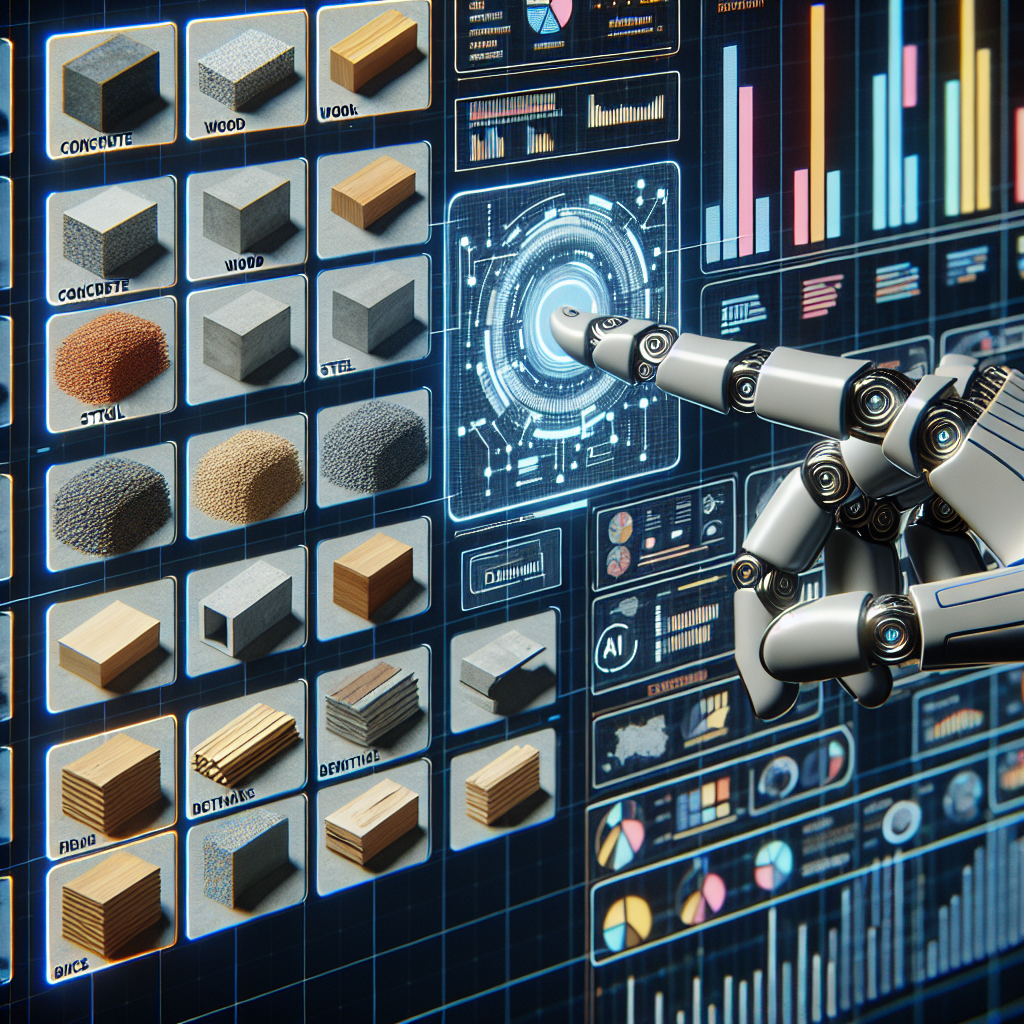Advancements in technology have revolutionized the way we live, work, and play. One area where technology is making a significant impact is in the construction industry. Artificial intelligence (AI) is being used to streamline processes, increase efficiency, and improve the overall quality of buildings. One particular aspect of construction that AI is being used for is building material selection.
AI-driven building material selection is a process where AI algorithms analyze various factors such as cost, durability, sustainability, and aesthetics to recommend the best materials for a construction project. This technology is revolutionizing the way architects, engineers, and builders choose materials, leading to better buildings that are more cost-effective, sustainable, and aesthetically pleasing.
There are several benefits to using AI-driven building material selection, including:
1. Cost savings: One of the primary benefits of AI-driven building material selection is the potential for cost savings. By analyzing various factors such as material costs, maintenance costs, and energy efficiency, AI algorithms can recommend materials that are not only cost-effective upfront but also over the lifespan of the building. This can result in significant savings for construction projects, especially for large-scale developments.
2. Improved sustainability: Sustainability is becoming increasingly important in the construction industry, with more and more builders and developers looking for ways to reduce their environmental impact. AI-driven building material selection can help in this regard by recommending materials that are eco-friendly, energy-efficient, and made from sustainable sources. By using AI to select materials, builders can reduce their carbon footprint and contribute to a more sustainable future.
3. Enhanced durability: Another benefit of AI-driven building material selection is the ability to recommend materials that are durable and long-lasting. AI algorithms can analyze factors such as weather conditions, building usage, and maintenance requirements to recommend materials that will stand the test of time. This can result in buildings that are more resilient to wear and tear, reducing the need for costly repairs and replacements down the line.
4. Aesthetically pleasing designs: In addition to cost savings, sustainability, and durability, AI-driven building material selection can also help architects and designers create aesthetically pleasing buildings. By analyzing factors such as color, texture, and shape, AI algorithms can recommend materials that will enhance the overall look and feel of a building. This can result in buildings that are visually appealing and unique, setting them apart from the competition.
5. Faster decision-making: Finally, AI-driven building material selection can help streamline the decision-making process for builders and developers. By using AI algorithms to analyze and compare materials, construction professionals can make informed decisions quickly and efficiently. This can help speed up the construction timeline, reduce delays, and ensure that projects are completed on time and within budget.
Overall, AI-driven building material selection offers a range of benefits for the construction industry, including cost savings, improved sustainability, enhanced durability, aesthetically pleasing designs, and faster decision-making. By harnessing the power of AI, builders and developers can create better buildings that are more efficient, sustainable, and visually appealing.
FAQs:
Q: How does AI-driven building material selection work?
A: AI-driven building material selection works by using algorithms to analyze various factors such as cost, durability, sustainability, and aesthetics to recommend the best materials for a construction project. These algorithms can take into account a wide range of data points to provide accurate and informed recommendations.
Q: Can AI-driven building material selection be used for all types of construction projects?
A: Yes, AI-driven building material selection can be used for a wide range of construction projects, from residential homes to commercial buildings to infrastructure projects. The technology is versatile and can be tailored to meet the specific needs of different types of construction projects.
Q: How accurate are the recommendations provided by AI-driven building material selection?
A: The accuracy of the recommendations provided by AI-driven building material selection depends on the quality of the data input into the algorithms. By providing accurate and up-to-date data, builders and developers can ensure that the recommendations are as accurate as possible.
Q: How can builders and developers incorporate AI-driven building material selection into their projects?
A: Builders and developers can incorporate AI-driven building material selection into their projects by working with technology providers that offer AI-driven solutions. These providers can help implement the technology, train staff on how to use it, and provide ongoing support to ensure that projects run smoothly.
Q: What are some examples of AI-driven building material selection in action?
A: One example of AI-driven building material selection in action is the use of AI algorithms to recommend energy-efficient materials for a commercial building project. By analyzing factors such as insulation properties, thermal performance, and energy consumption, the algorithms can recommend materials that will help reduce the building’s carbon footprint and energy costs.
In conclusion, AI-driven building material selection is revolutionizing the construction industry by providing builders and developers with cost-effective, sustainable, durable, and aesthetically pleasing material recommendations. By harnessing the power of AI, construction professionals can create better buildings that meet the needs of today’s market and contribute to a more sustainable future.

